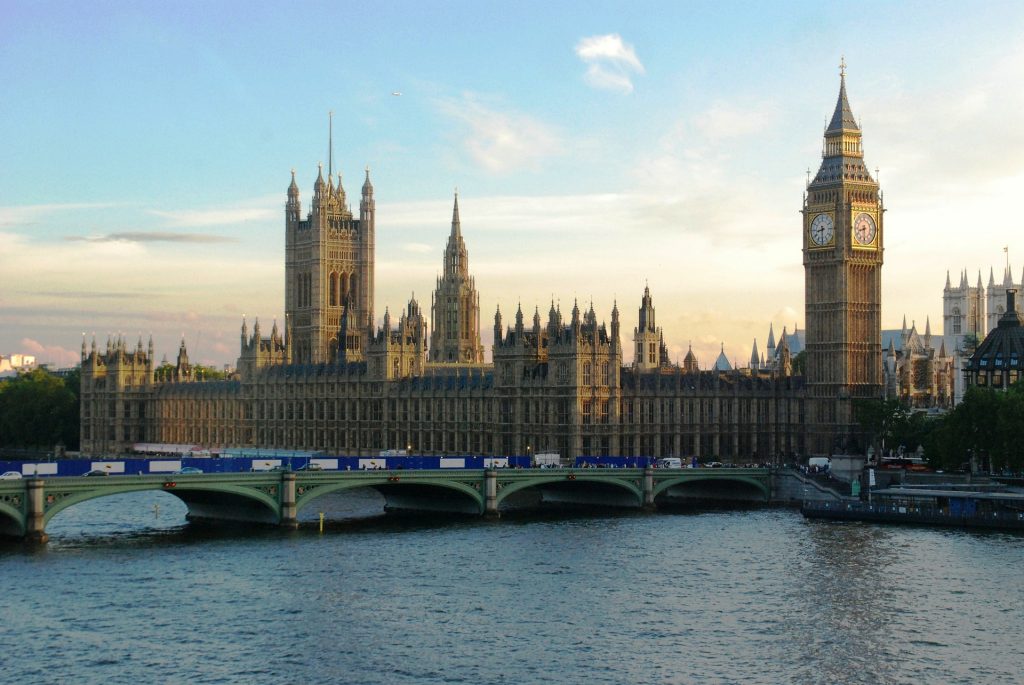
Clear the Lobby: What Laws are MPs voting on this week? W/C 23rd January 2023
January 26, 2023
Clear the Lobby: What Laws are MPs voting on this week? W/C 30th January 2023
January 30, 2023Article by Bethany Seed
It is no secret that one of the biggest challenges facing our society today is our limited natural resources and the impact that fossil fuels and greenhouse gas emissions (GHG) have on our climate. Fossil fuels are the largest contributor to global warming; over 75% of greenhouse gas emissions and almost 90% of carbon dioxide emissions are accounted for by the burning of these resources. The damage caused by the changing climate includes rising global temperatures, changes in precipitation patterns and a loss of biodiversity, as well as a negative impact on human health. But how do we tackle such a widespread issue?
Net zero – (im)possible?
In its simplest form, “net zero” refers to getting our carbon emissions as close to 0% as possible. Given our dependence on fossil fuels for energy, this seems like an impossible task. Scientists have agreed that for the world to be habitable, the global temperature cannot increase more than 1.5℃ from pre-industrial levels. To keep this from happening, 196 countries signed the Paris Agreement at COP 21 in 2015. The agreement legally binds these states to tackle climate change and encourages them to have access to clean, affordable energy by 2030, and to be net-zero by 2050. So what is being done to reach these ambitious goals?
The United Nations is actively working to support the global effort to achieve net zero greenhouse gas emissions and address the challenge of climate change. The UN has established numerous initiatives and frameworks to promote the transition to a low-carbon, climate-resilient future, including;
– The Sustainable Development Goals (SDGs): These are a set of 17 global goals adopted by the UN in 2015 to protect the planet, amongst other important initiatives. Goal 13 of the SDGs specifically addresses climate action and calls for urgent action to combat climate change and its impacts.
– The UN Framework Convention on Climate Change (UNFCCC): this is a global treaty signed by almost all countries in the world, which aims to stabilise GHG concentrations in the atmosphere at a level that would prevent dangerous human impact on the climate system. For example, the Clean Development Mechanism allows developed countries to offset their emissions by investing in clean energy and other environmental projects in developing countries.
– The UN Environment Programme (UNEP): UNEP provides technical assistance, policy advice and other support to help countries reduce GHG emissions, adapt to the impacts of climate change and implement provisions within the UNFCCC.
Overall, the UN is working to support countries in their efforts to achieve net zero emissions and address the challenge of climate change through a variety of initiatives and frameworks.
This emphasis on achieving net zero is echoed in the UK Government’s response to the climate crisis. For example, in 2019, the UK Government legislated the target to reduce emissions to net zero by 2050, making them the first country to enshrine the goal of net zero by 2050 into law. The Government also invests in clean energy technologies, including offshore wind, solar power and energy storage which drive down the costs of clean energy and makes it more accessible to individuals and businesses. The UK has also introduced a carbon pricing system called the Carbon Pricing Floor, which sets a minimum price on GHG emissions. The system is designed to incentivise businesses to reduce their emissions and invest in low-carbon power generation.
Industry Update
In November 2022, the Conference of the Parties to the United Nations Framework Convention on Climate Change (COP27) took place in Egypt and shone a light on the need for a global and proactive move towards reducing carbon emissions immediately. The UN Secretary-General António Guterres highlighted that as temperatures rise, we must not allow it to reach the 1.5℃ temperature limit, and he stressed the importance of climate justice and climate ambition.
Earlier in 2022, the Mission Possible Partnership (MPP) was created to spearhead the decarbonisation of seven of the most emission-heavy industries; aviation, shipping, aluminium, chemicals manufacturing, cement/concrete, steel and trucking. The aim of the partnership is to bring these industries to net-zero emissions by 2050. In some of these industries, tangible results are already being sought.
Aviation
For example, the aviation industry may be closer than we thought to achieving these goals. Virgin Atlantic has recently secured government funding to launch the first-ever net-zero transatlantic flight from London to New York. The flight, powered by a blend of conventional jet fuel and SAF produced from household waste, will reduce the flight’s CO2 emissions by over 60%. In addition, any carbon released from the flight will be trapped by biochar credits which makes the flight net zero. SAF, replacing kerosene, has the potential to reduce carbon emissions by over 70% of conventional jet fuel. It is made from waste oils and fats, such as used cooking oil. The use of SAF is a key part of the solution to lowering carbon emissions. It can significantly reduce the carbon intensity of aviation whilst still providing the performance and reliability required for long-haul flights.
The net zero flight is part of Virgin Atlantic’s ambition to become the first net zero carbon airline. They are focusing on a number of strategies including the use of SAF, the development of new technologies to reduce emissions and the offsetting of remaining emissions through the purchase of verified carbon credits. Some of the benefits associated with these strategies are that the aviation industry, which is one of the biggest culprits of high GHG emissions, will be decarbonised. It will also create a UK industry with an annual turnover predicted at £2.4bn by 2050. Moreover, this industry has the potential to create up to 5,200 jobs by 2035 which would hugely benefit the UK economy in coming years by increasing the GDP and decreasing the rate of unemployment.
Whilst this is a huge step forward in the fight against the climate crisis, the Christmas period could have a damaging effect on the progress made.
What is “Fast Fashion” and why is it bad for the environment?
With the rise of fast fashion brands such as SHEIN, PLT and Boohoo, the effect on the environment is tangible.
The fast fashion industry, which involves the rapid production and turnover of cheap, trendy clothing, has a significant impact on the environment. One of the most detrimental aspects of the industry is the production of clothing, which generates GHG emissions at an alarming rate. Some of the other impacts of fast fashion include:
– Water pollution: Chemicals and dyes used in the manufacturing process can end up in rivers, causing harm to ecosystems and human health.
– Waste: The cheap and low-quality clothing is often thrown away after a few uses. The waste ends up in landfills where it can take decades to decompose.
– Deforestation: Materials, such as cotton, leather and wool, are sought after in the production of these clothes. The cultivation of these materials can lead to the loss of biodiversity, soil degradation and GHG emissions.
It is important to recognise the impact of fast fashion on the environment and make conscious choices to adopt more sustainable fashion practices. Some more sustainable options may be buying things second-hand, choosing sustainably made brands and participating in initiatives such as clothing swaps or upcycling.
Conclusion
It is clear that the climate crisis is an immediate concern worldwide, and countries are working together globally to combat the issue. One of the ways in which they are doing this is by targeting the highest impacting industries and developing ways to prevent and reverse their carbon emissions. However, practices such as fast fashion may be slowing down their progress. Being net-zero by 2050 is an ambitious target, and so more must be done to tackle all industries contributing to the climate crisis in order for us to make real progress.
References:
https://sdgs.un.org/goals
https://unfccc.int/
https://www.gov.uk/government/news/uk-becomes-first-major-economy-to-pass-net-zero-emissi ons-law
https://www.edie.net/definition/carbon-price-floor/
https://www.un.org/en/climatechange/cop27
https://www.un.org/en/climatechange/net-zero-coalition
https://unfccc.int/process-and-meetings/the-paris-agreement/the-paris-agreement#:~:text=The% 20Paris%20Agreement%20is%20a,compared%20to%20pre%2Dindustrial%20levels. https://sdg.iisd.org/commentary/policy-briefs/decoding-net-zero-pledges-to-meet-paris-agreeme nt-goals-sdg-7/
https://www.gov.uk/government/news/worlds-first-net-zero-transatlantic-flight-to-fly-from-london-i n-2023
https://www.businessinsider.com/fast-fashion-christmas-shopping-clothes-returns-shein-zara-wa ste-mountain-2022-12?r=US&IR=T
https://www.voguebusiness.com/sustainability/the-year-fashion-finally-faced-its-social-impact





